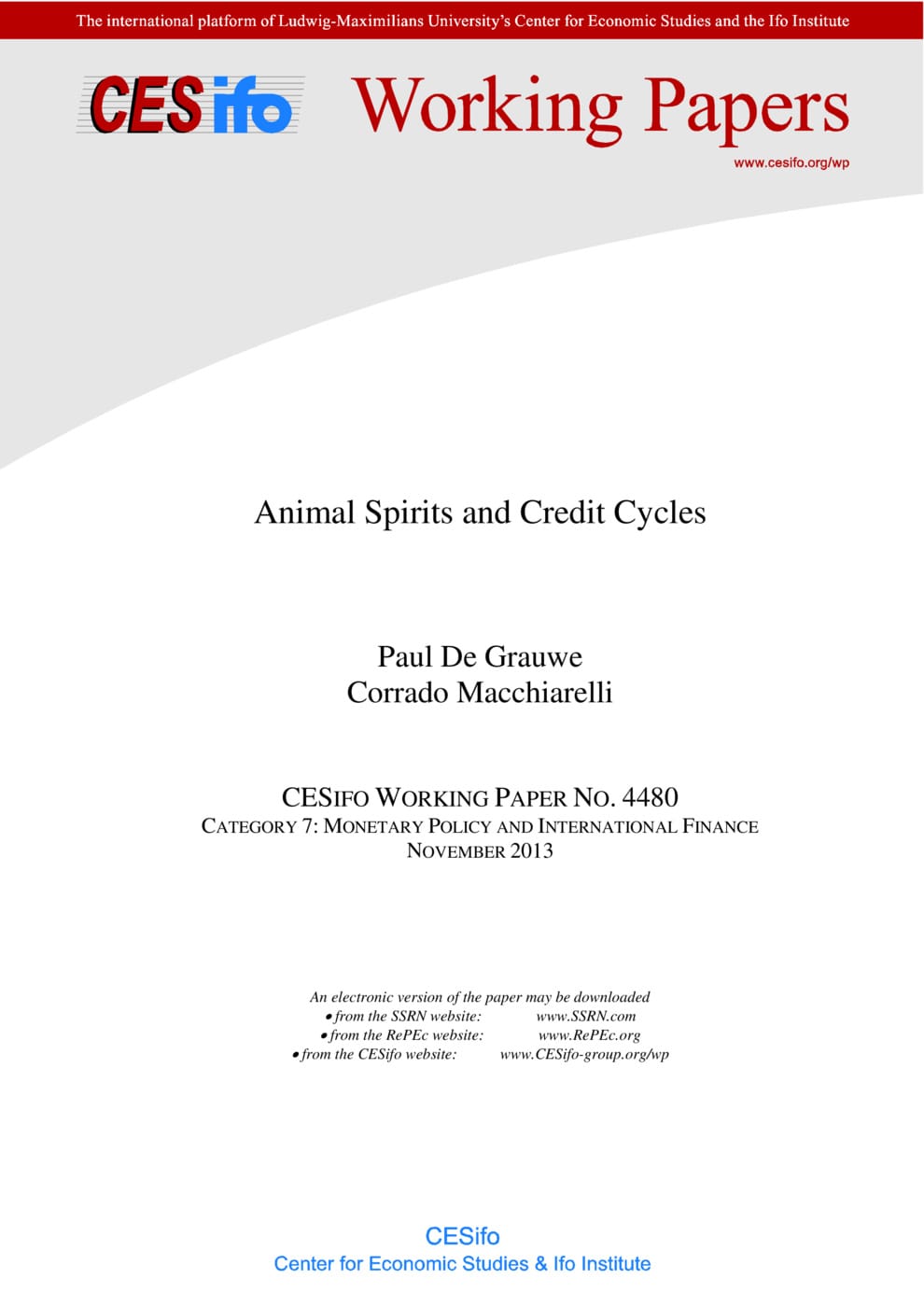Animal Spirits and Credit Cycles
CESifo, Munich, 2013
CESifo Working Paper No. 4480

In this paper we extend the behavioral macroeconomic model as proposed by De Grauwe (2012) to include a banking sector. The behavioral model takes the view that agents have limited cognitive limitations. As a result, it is rational to use simple forecasting rules and to subject the use of these rules to a fitness test. Agents then are driven to select the rule that performs best. The behavioral model produces endogenous and self-fulfilling movements of optimism and pessimism (animal spirits). Our main result is that the existence of banks intensifies these movements, creating a greater scope for booms and busts. Thus banks do not create but amplify animal spirits. The policy conclusion we derive from this result is that the central bank has an important responsibility for stabilizing output. Output stabilization is an instrument to “tame the animal spirits”. This has the effect of improving the tradeoff between inflation and output volatility.
Monetary Policy and International Finance
Fiscal Policy, Macroeconomics and Growth